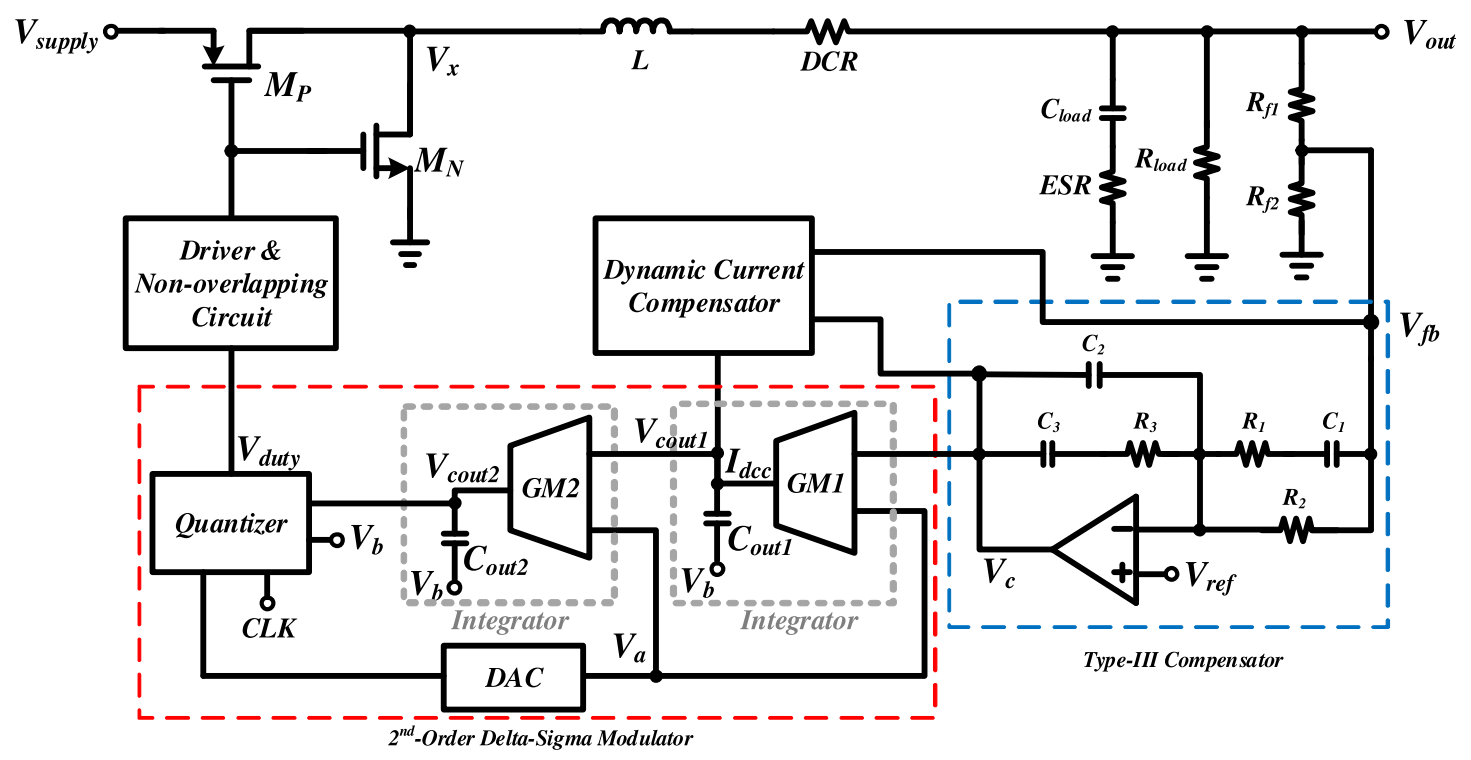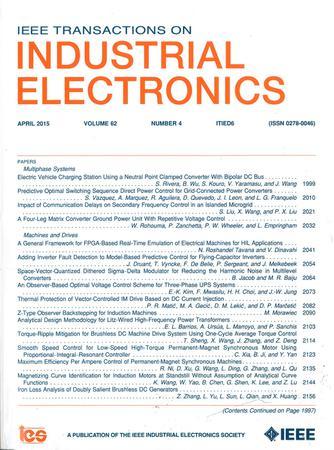A Low-EMI Continuous-Time Delta-Sigma-Modulator Buck Converter with Transient Response Eruption Techniques
A second-order delta-sigma buck converter with low-EMI and fast-transient-response techniques was proposed in this article.

Fig. 1. Block diagram of the proposed second-order DSM buck converter.
Technology Overview
The measurement results show that the peak noise power is -70 dBm across output spectrum, which is -10 dBm lower than a traditional CT-DSM buck converter. When the load current changes from 50 to 500 mA and from 500 to 50 mA, the transient responses are both 4 μs, which are 7 μs faster than the traditional CT-DSM buck converter. The maximum output overshoot voltage is 20 mV, the output voltage ripple is 10 mV, and the conversion peak efficiency 90.4% at the output voltage of 2.4 V.
Applications & Benefits
Therefore, the proposed chip can not only mitigate interference and coupling problems in noise-sensitive or RF circuits, but also has the advantages of conventional converters. This allows the associated buck converter to be integrated on the same chip as the mixed-signal circuits, even enhancing overall characteristics.
Abstract:
This article proposes a low spurious noise and fast-transient-response buck converter with second-order continuous-time delta-sigma modulator (CT-DSM). The DSM technique has the superiority of oversampling and the characteristics of noise shaping to reduce spurious noise and speed up transient response. Moreover, the transient response eruption technique uses a dynamic current compensator to accelerate the transient response. Therefore, the proposed CT-DSM buck converter reduces spurious noise, reduces the output harmonic tones, and accelerates transient response, but it keeps high efficiency, low noise, and low ripple of the traditional switching converter. The proposed DSM buck converter is fabricated in TSMC 0.35 μm 2P4M CMOS process with a chip area of 1.32 ×1.38 mm. The measurement results show that the peak noise power is -70 dBm across output spectrum, which is -10 dBm lower than a traditional CT-DSM buck converter. When the load current changes from 50 to 500 mA and from 500 to 50 mA, the transient responses are both 4 μs, which are 7 μs faster than the traditional CT-DSM buck converter. The maximum output overshoot voltage is 20 mV, the output voltage ripple is 10 mV, and the conversion peak efficiency 90.4% at the output voltage of 2.4 V. These characteristics keep the same performances as or even better than the traditional CT-DSM buck converter.

A Low-EMI Continuous-Time Delta-Sigma-Modulator Buck Converter with Transient Response Eruption Techniques
Author:Hwang Y.-S.,Chen J.-J., Yang J., Ku Y.
Year:2020
Source publication:IEEE Transactions on Industrial Electronics Volume: 67, Issue: 8, Aug. 2020
Subfield Highest percentage:99% Control and Systems Engineering #3/260
